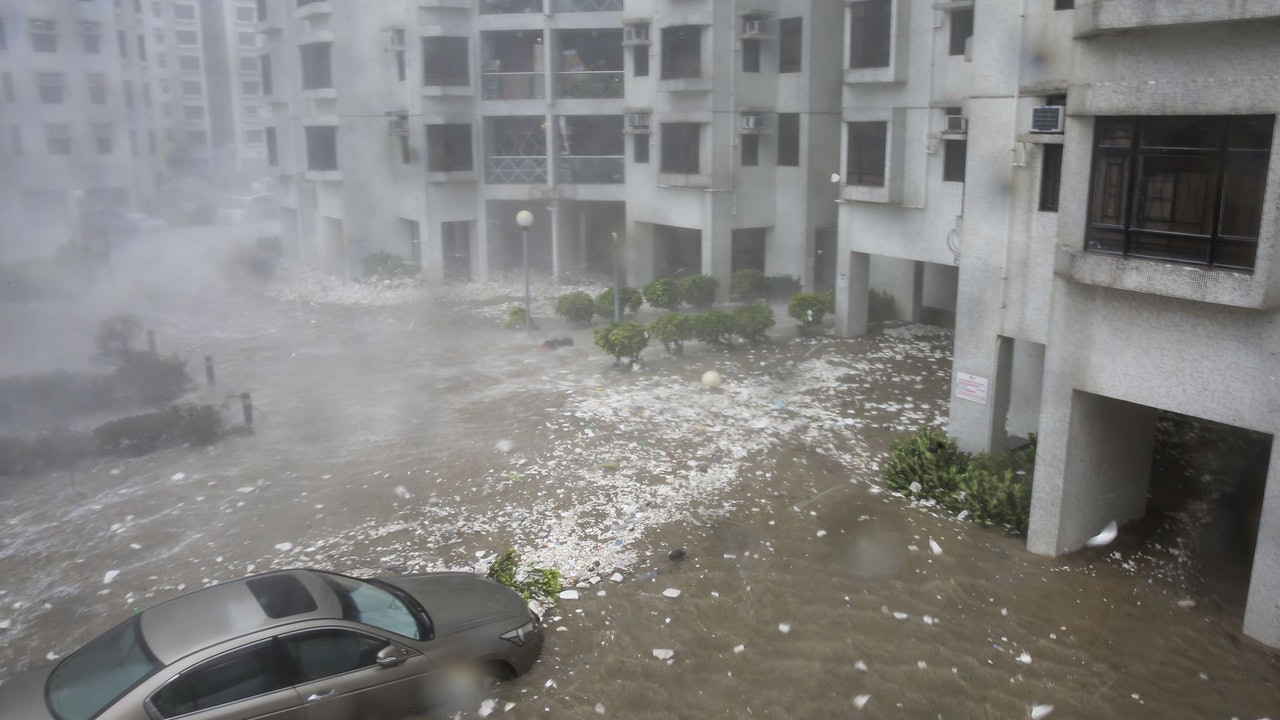The super typhoons "Mangosteen" and "Haodo" struck years ago. The people of Hong Kong clearly felt the destructive power of tropical cyclones. Their memory is still fresh. A study by the Chinese University of Hong Kong found that if the global climate continues to warm, it will be estimated to this century. From 2075 to 2099, when the typhoon makes landfall, the wind speed will increase by 7.2 kilometers per hour compared to the current one, and its duration will be extended by about 5 hours, and the moving distance will increase by about 92.4 kilometers inland, which means that the typhoon will double its damage on land.
▼Typhoon "Mangosteen" hit Hong Kong in 2018▼
+5
In the past 40 years, typhoons have moved more and more inland, and the distance has increased by 190 kilometers. Vietnam and southern China are the most affected
Tan Zhiyong, Associate Professor of Earth System Science at CUHK, who led this research, and his research team, together with the Guangdong-Hong Kong-Macao Greater Bay Area Meteorological Monitoring and Forecasting Center, analyzed typhoons and their effects from 1979 to 2016 through storm track data and found that the past 40 The intensity of the typhoon generally increased when it landed in the year, the duration of the storm was extended by an average of 2 to 9 hours, and the distance moved inland increased by an average of 30 to 190 kilometers. Among them, Hanoi, Vietnam and southern China were the most affected.
If global greenhouse gas emissions continue to be high at the end of the century, the typhoon will advance 92.4 kilometers inland
The research team further used the climate model to calculate, assuming that the greenhouse gas concentration path is maintained at a level of 8.5, that is, the global greenhouse gas emissions will remain at a high level in the future. It is expected that by the end of this century, the wind speed when the typhoon makes landfall will increase by 7.2 kilometers per hour. Its duration was extended by about 5 hours, and its travel distance increased by about 92.4 kilometers inland.
The research results have been published in the academic journal "Frontiers in Earth Science".
▼ Lei Yue Mun was damaged by wind and rain under Typhoon Signal No. 8 on October 13 ▼
CUHK: More inland areas of Asia may face severe typhoon disasters in the future
Tan Zhiyong said that in June this year, two typhoons "Fireworks" and "Chapaka" brought a series of heavy rains to the inland China's Henan Province. Although they did not directly hit Henan Province, they caused huge numbers of people and people in the area. Economic losses; in September of the same year, the remnants of hurricane "Ada" passed through the northeastern United States, bringing catastrophic rainstorms, reflecting the threat of tropical cyclones in inland areas.
He believes that due to climate change, more inland areas of Asia may face more severe typhoon-related disasters in the future. Therefore, it is necessary to strengthen the long-term planning of disaster preparedness and typhoon resistance in relevant areas to deal with the increasing threat of typhoons.
The climate organization simulates global warming. If the flooding rises by 3 degrees, Hong Kong’s central waterfront will retreat to the HSBC Headquarters super typhoon Shanzhu flooded substation. The Hongkong Electric 5 defense line prevents wind disasters and power outages. The climate performance of the port is only C-regressive compared with last year. Renewable energy power generation Disappointing target grouper and sea bream are extinct crisis research: severe climate change may cause the biomass of the South China Sea to fall by 93%









